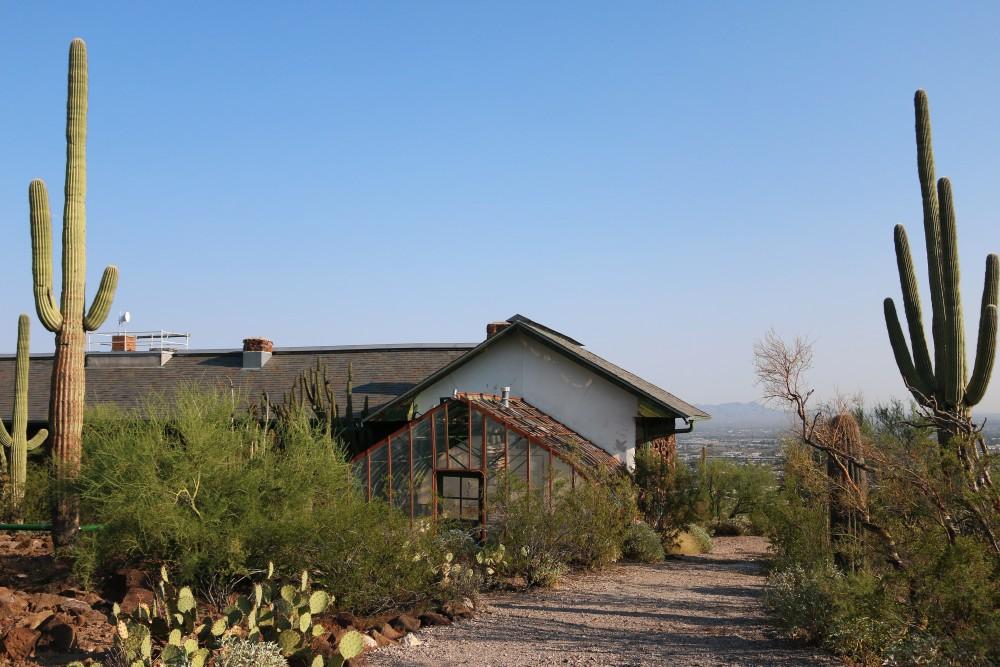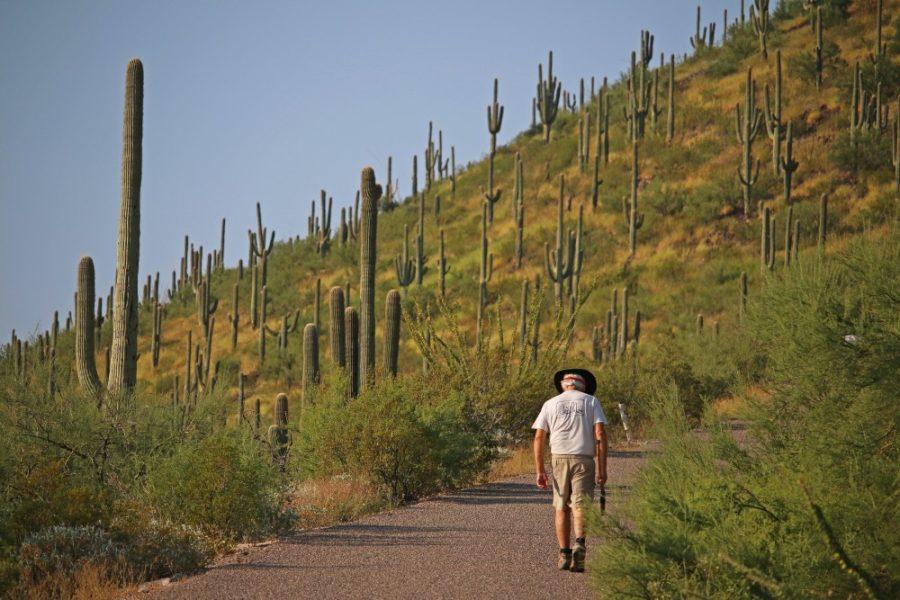Starting in late January, the 1.5-mile road up Tumamoc Hill will be repaved for the first time since the early 1990s. Tumamoc Hill is an 860-acre ecological reserve that houses the Desert Laboratory on Tumamoc Hill, an institution for ecological research since 1902. It is owned and operated by the University of Arizona.
“The road has served the walking community, the people who use the hill for exercise and also services the research community who use the desert lab buildings, [but] the roads have gotten into bad condition,” said Ben Wilder, director of Tumamoc Hill.
Pointing to large cracks and potholes as hazards, Wilder said the entire process is slated to take about two weeks. Starting Jan. 22, the road will be closed while the old asphalt is broken down to make a new road bed, then paved over.
“We’re not widening the road, because it’s a National Historic Landmark and the entire site is protected, so we have to work within the footprints,” Wilder said. “However, there will be a stripe added a third of the way across the road, so there’s a clear designation of people and cars to help with the traffic.”
RELATED: Art and science rendezvous at Tumamoc
The project will cost $200,000, according to Wilder. Half of that cost is being covered by the UA, and the other half will be raised by a crowdfunding campaign. Of that remaining $100,000, Edith Sykes Lowell and David Lowell are providing a dollar-for-dollar match up to $50,000, Wilder said.
“Edith is one of the great granddaughters of one of the first scientists [on Tumamoc] who actually built many of the buildings up at the lab,” Wilder said. “There’s a really awesome connection there.”
The Lowell family has donated to the UA in the past, including support for the Lowell-Stevens Football Facility.
As of Jan. 7, the crowdfunding campaign is 60 percent of the way there, with more than $26,000 raised from 95 donors. The campaign is hosted on the UA’s crowdfunding platform, meaning the full cost of the project is also shown.
Community members who donate at least $25 can become a “Friend of Tumamoc”, according to Wilder. The new program will help engage community members with regular updates about what’s happening on Tumamoc Hill, as well as invitations to special events and lecture series.
“We have thousands of people who walk Tumamoc Hill who love the site and care for it, and in the past there has not been a lot of opportunities for the community to interact … or contribute to the stewardship of the site,” Wilder said. “They want to contribute.”

While the two-week closure is inconvenient, Wilder said in the bigger picture, it’s a small amount of time to strengthen the road for the next 20 years.
“We’re calling it the road to Tumamoc’s tomorrow, it’s about the road itself … but it’s really the first piece to a bright future,” Wilder said. “[This is] paving the way to do our expanded projects.”
Those future projects include a visitor center at base of the hill, public restrooms, community gardens and an amphitheater, according to Wilder, and all of it will allow them to focus and enhance the science and research done at the lab buildings.
“To better help us, the Desert Lab and the UA, accomplish our mission for research and education, we need to fix the road. At the same time, we’re entering into a really new and exciting era of Tumamoc Hill,” Wilder said. “The site has had a research station for over 115 years, but there’s deferred maintenance and there’s a lot of things we need to do to put the lab and Tumamoc Hill on solid footing for years to come.”Follow Marissa Heffernan on Twitter









